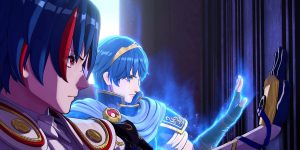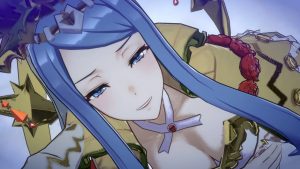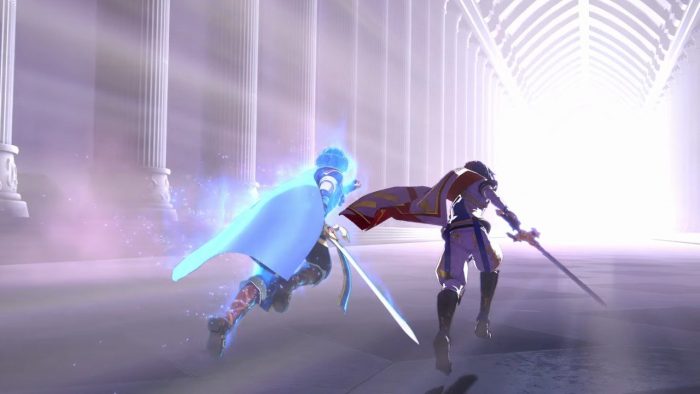
-Major Spoilers Ahead!-
The Fire Emblem series of strategy RPGs has had a strong presence in the video game industry for over 30 years, all of which has come to a head with the newly released anniversary title, Fire Emblem: Engage. Using 12 mysterious Emblem rings, our main character Alear can call upon the spirits of the previous games’ protagonists to lend their powers in a new fight against the Fell Dragon Sombron. This leads to some very interesting tactical gameplay, but the story... doesn’t quite hold up.
After the complex and dramatic Three Houses, the simple but solid Echoes and Awakening, and even the endearingly bonkers Fates, Engage feels like a massive letdown. But why did we and so many other gamers react this way? What would’ve been better? And is it even possible to just enjoy the battles without the plot getting in the way? Let’s talk about why Fire Emblem: Engage’s story is so frustrating.
Emotional Stakes and Worldbuilding
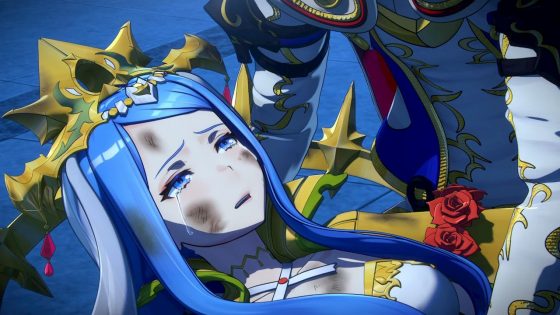
Two of the most important things to get someone engaged (ahem) in a story are emotional stakes and worldbuilding. Are you invested in the characters and their struggles? Have their relationships been built up enough that you care when something goes wrong? And does the world that they live in feel like a real place that has its own purpose outside of the current plotline? Not every story needs to nail both of these concepts to be successful, but many of the best ones do. Three Houses has stayed in the popular consciousness for so long largely because of its highly detailed world and the interpersonal drama that drives its characters to action. Fates’s plot is more than a little bit nonsensical, and its world is pretty black-and-white, but the family dynamics are genuine enough that you still feel for the characters as they try to piece their broken relationships back together.
Engage does do a few of these things, particularly with incidental elements like each character’s casual outfit perfectly expressing their personality, or how Alfred’s exuberance is a coping mechanism for his chronic illness. But it tries to have this dramatic plot, complete with shocking deaths and betrayals and bonds to last the ages, even though there’s just so little to hold onto. How are we supposed to care about Queen Lumera dying or Marth and the other Emblems getting taken away when Alear has hardly spoken to them? How can we empathize with the other members of the army losing their kingdoms or seeing a random village burn down when we barely know how their world functions? And when Alear is resurrected as an Emblem, how do we focus on what’s meant to be a triumphant moment when we’re too busy wondering how on Earth that’s supposed to work?
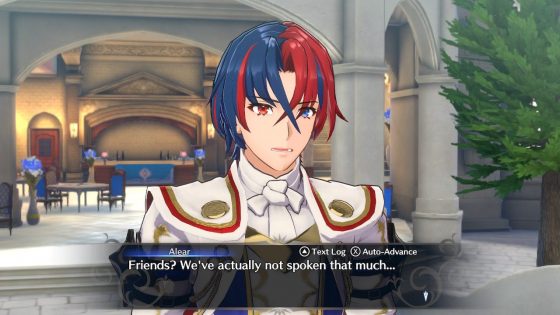
How on Earth is Any of This Supposed to Work?
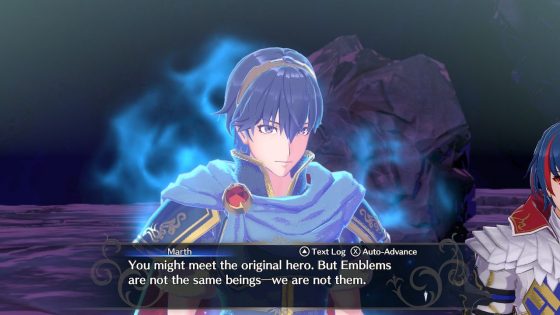
Look, we know as well as anyone that a story doesn’t have to make perfect sense to be impactful. Shounen anime has been riding the “rule of cool” wave for decades, after all. But all the hype in the world won’t matter if the story fails to get you invested first, and that’s why many of Engage’s plot holes and inconsistencies stand out so much. Just for fun, let’s go through some of them.
Why does nobody seem to care when former enemies join the army? Previous Fire Emblem games have shown tension within the ranks when someone who previously tried to kill the party (and may do so again) eventually joins them, but even Veyle is welcomed with open arms.
Why are the villains given tragic backstories seconds before they die? Marni absolutely wanted to spill some innocent blood earlier, so why are we mourning her now? Zephia sacrifices herself to help the heroes and even she doesn’t know why, Griss suddenly cares for Zephia like a mother, and Sombron constantly flip-flops between wanting companionship and being a loner like he’s an edgy teenager or something.
Lots of potentially interesting elements are teased, barely used, and subsequently discarded. Evil Atlantis rises from the ocean? It’s fine. Time travel to the past and interact with your previous self? Doesn’t affect anything. Alear is called a Divine Dragon for the whole game, is shown to have been in possession of a dragonstone, and their parents can turn into dragons? No dragon form for you. Buy the DLC to get Tiki if you want to be a dragon so badly.
And finally... what exactly are the Emblems supposed to be? They’re spirits of heroes from other worlds, but does that mean that they’re dead? Sigurd is dead because that’s what happens in his game, but Marth is “alive” despite being Lucina’s distant ancestor. Marth then says near the end of the game that they’re not the “original versions” of the heroes, so are they copies instead? What does that mean for Alear, who is both an Emblem and a mortal in a Jesus sort of way? And why does the next scene after their resurrection just show them as a normal person with no explanation as to how they can be corporeal after becoming an Emblem? Argh!
How It Could’ve Been Better
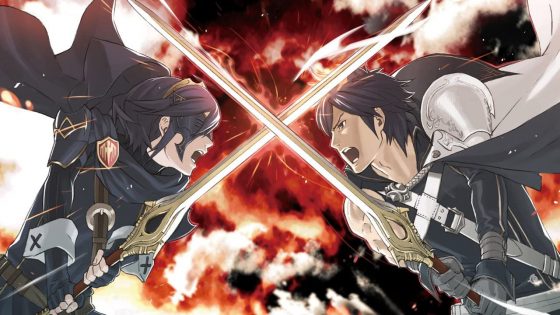
You may be thinking at this point that we’re complaining because Engage isn’t as complex and well thought out as Three Houses, but that’s not exactly it. Most Fire Emblem games share the same simple premise – a young royal raises a ragtag army to defeat the evil Fell Dragon/wizard/etc. – and it works just fine. That’s largely what Awakening and Echoes were, with a few moments of very real emotion to give them an identity. If Engage had stuck to this same basic formula, we wouldn’t have minded one bit.
The problem is that it tries to be bigger than that, something worthy of being the franchise’s 30th anniversary milestone, without actually putting in the effort to make the story as impactful as it wants it to be. It tries to cram in so much drama and fanservice for previous games that it loses track of what it should’ve been focusing on. So how could it have been better?
Conveniently enough, you don’t have to look far to see an example of an anniversary story done well. Despite not actually celebrating any milestone, Awakening uses the setting and mythology of the original two Fire Emblem games (the Archanea series) to tell a new tale set many years in the future. You don’t need to know anything about the old games to understand what’s going on (although the little continuity nods are nice for classic fans), but the legend of Marth and his reign as the Hero-King have an impact on the plot that strengthens Awakening’s central themes of family ties and striving for a better future.
Engage’s central theme is that the bonds between people make us stronger, and Alear’s personal arc is about learning to become a capable leader, so let’s focus on that. Give us more time with Lumera, the four main royals, and Veyle so that we care about them more. Show us what being the Divine Dragon really means, in both a political and religious sense, and how that affects the relationships between Alear and their friends. And when Marth and the other Emblems are taken away, use that opportunity to force Alear to become a capable leader on their own, rather than relying on others to succeed (see our other article, “Does Fire Emblem: Engage’s Mid-Game Twist Actually Work?” for more on that and how it would affect the gameplay). This would also make the Emblem paralogues more relevant, since Alear would be seeking inspiration from the previous heroes' adventures to apply to their own journey. It’s perfectly possible to make Engage’s story work without changing that much, but it would require some genuine effort.
Final Thoughts
If you can just ignore all of this and focus on Fire Emblem: Engage’s exciting battles (even though the story does impact the gameplay significantly when the Emblems are stolen), then we’re happy for you. But whether you’re fine with the story as-is or you felt like something was missing, be sure to tell us about your thoughts in the comments. Thank you so much for reading!
Recommended Post
Does Fire Emblem: Engage's Mid-Game Twist Actually Work?
Recommended Post
Fire Emblem: Engage - Nintendo Switch Review
Recommended Post
In What Order Should You Play Fire Emblem: Three Houses?
Recommended Post


